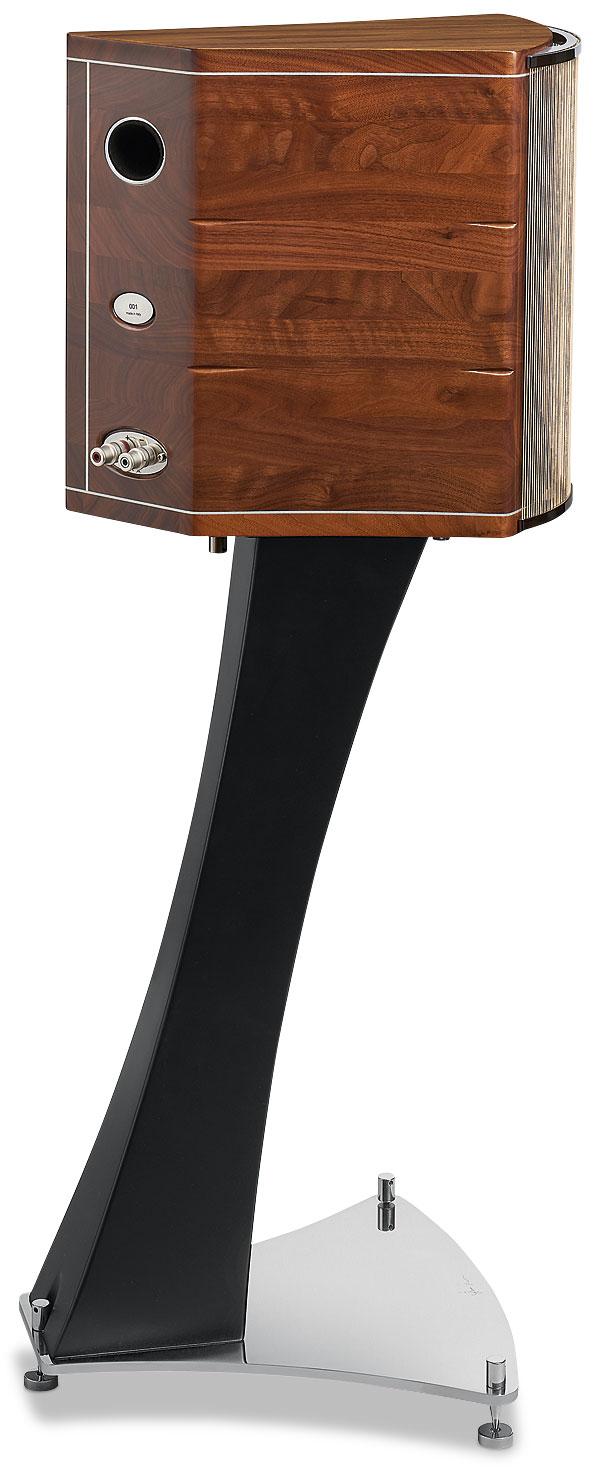Franco Serblin Accordo Goldberg Loudspeaker Page 2
![]() Setting The Stage
Setting The Stage
Named after the Bach composition rather than the WWE wrestler or the TV show, the Accordo Goldberg is so revealing that I was concerned it might deliver too forensic a sound. The deception continued: more than any speaker I have heard in the past few years, its sound adheres to a premise I first learned of back in the 1980s. As with designs from DeVore, D'Agostino, SoundSmith, de Paravicini and others conceived by auteurs, the Goldberg is the embodiment of Franco Serblin's philosophy.
First and foremost, as evinced by the almost tyrannical strictures regarding placement, soundstage reproduction is arguably the primary concern. I recall Franco Serblin explaining to me his admiration for the concept of the proscenium, as one would expect of a designer almost exclusively concerned with live classical performances. Every loudspeaker he designed explored this aspect, echoing what I was also told by Infinity's co-founder Arnie Nudell – if the soundstage is right, so is the rest.

Categorically, the Accordo Goldberg deftly places the performers – whether a group or solo – in the space created by the triangle formed by the speakers' siting. At first it was disconcerting, because I have grown used to sounds outside of the speakers' edges, but I soon adapted to the notion of a tightly defined space between them. This area's dimensions could be 'dialled in' according to the size of the room, with the benefit of opening up even the artificial soundstage of a studio-assembled recording.
It was The Who's live version, though, of 'Baba O'Riley' [Who's Next/Life House; Polydor 3585826 CD] that conveyed to me the success of the Accordo Goldberg in adhering to Franco's mission statement. As much as all classical orchestral devotees like to remind philistines such as I that live music is the only arbiter of accurate reproduction, the reality is that grand orchestras in massive halls are far more amorphous than small works fashioned in studios, however artificial the instrument placement. And what can better a lone voice or instrument for testing a system's veracity and accuracy?
Lost In Music
I never bought into that talk about hearing 'the fourth violin from the left', so The Who's 'wall of sound' as presented by this recording is no less valid than a five-star Deutsche Grammophon album. But through the Goldbergs, within the confines established by the way they were positioned, I heard a perfectly formed diorama with image height and soundstage depth that rendered me nearly stupefied.
It was, as Franco always wanted to proffer, a path to losing one's self in the music. Listening to The Who's audience, despite it being in two-channel rather than surround, produced a clue to the Serblin formula – it was all-embracing. And that, it turns out, is the primary nature of the Accordo Goldberg. The miracle is that this sensation is not a product of the speaker being too soft or forgiving. Instead, it revealed another unexpected trait, which again recalled the original Extrema.
Delicious Beats
As cultured and refined as was Franco Serblin, the Accordo Goldberg standmounts sounded better the louder they were played. It reminded me, too, of another conversation with Franco, who was no head-banger. He posited that every CD, LP or tape has an optimum playback level, clipping, breakup or distortion notwithstanding. Listening to harmonica so life-like that the SPLs seemed merely incidental, I understood what he meant, grabbing a harmonica of my own to hear the reeds and the levels.
Steely Dan's Can't Buy A Thrill [Analogue Productions CAPP134SA SACD] turned the clock back to the first time I heard the saxophone break in 'Dirty Work', with just the right balance of rasp and honk. Likewise, pace/rhythm/timing junkies would revel in the opening bongo patterns of the same album's 'Do It Again', delicious beats with the sounds of the heads almost shimmering. As for the vocals, I started imagining what an LS3/5A would sound like with a couple of octaves extending the bottom, and another 10dB added to the levels.

Throughout all my listening, there was a silkiness to the Accordo Goldberg's performance, a non-aggressive way with detail that had me scratching my head. How could there be this much detail without it sounding hyper-etched? The better tracks from the remastered 2023 edition of The Beatles' 'Red' collection, 1962-1966 [Apple 0602455920768] were even more revelatory than when I first played them, having grown accustomed to the remastering. The Goldberg is transparent enough to satisfy the forensically inclined who want to hear the differences.
Your Majesty
Ultimately, I was wooed by something so uncharacteristic that I have to nod to the Goldbergs for rendering fascinating a genre I usually ignore – stadium rock. Whitesnake's 'Here I Go Again' from Greatest Hits [Rhino R1 680917] afforded one more discovery, and it's that the Accordo Goldberg sounds as massive and majestic as even the larger Essence. Franco: your company is in good hands.
Hi-Fi News Verdict
Immediacy plays no role with this speaker. It must be learned, savoured like fine wine, in order to appreciate what it can do. The Accordo Goldberg handles the delicacy of acoustic guitar and ear-busting thrash, a cappella vocals and orchestral. Were I of a metaphysical bent, I would swear I sensed the spirit of Franco Serblin in my room. This is, like his first designs of 40 years ago, a sonic masterpiece.
























































